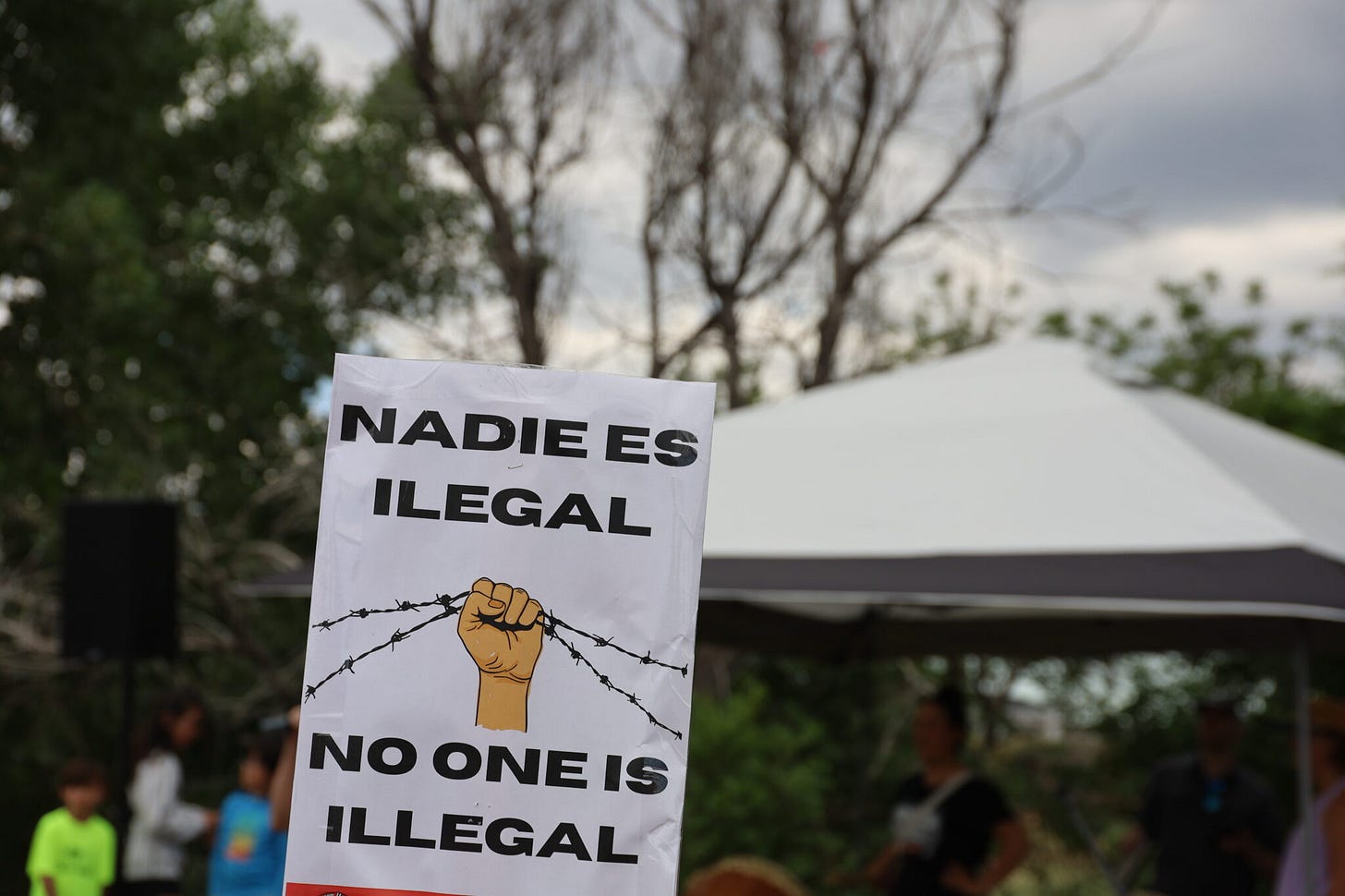Trump Eyes Colorado for New ICE Detention Centers
“One Big Beautiful Bill Act” Allocates 45 Million Dollars Towards Immigrant Detention

The “Big Beautiful Bill,” recently passed by the US Congress, allocates USD 45 billion towards immigrant detention centers. Records recently obtained by an ACLU Freedom of Information Act (FOIA) lawsuit reveal that the Trump administration plans to expand ICE detention in six potential locations in Colorado, including many facilities which have been out of commission for several years.
The news has raised alarms across the state.
Tim Macdonald, legal director at ACLU of Colorado highlighted that “Current immigration detention sites, including the GEO detention facility in Aurora, are already notorious for their inhumane conditions, including persistent medical negligence, inadequate nutrition, and routine rights violations… It is unconscionable to go on to expand this cruel, for-profit detention machine.”
“It comes as no surprise that ICE is looking to expand detention facilities in Colorado,” said Poncho Espino, a community organizer based in Denver. “Though enforcement has risen since Trump’s inauguration we know that ICE has been held back by the limits on their staffing budget and detention facility capacities. Now that the Big Beautiful Bill has made ICE the most well funded law enforcement agency in the country, they’re ready to dramatically expand their mass deportation efforts,” Espino told Peoples Dispatch.
Detainees reveal harrowing conditions at Trump’s new detention centers
Colorado is not the only site of new ICE detention centers.
Over a week has passed since the Trump administration opened a new ICE detention center in the Florida Everglades, and began accepting detainees on July 2, despite massive controversy. Since then, detainees at the new facility, dubbed “Alligator Alcatraz” by Trump’s immigration enforcement agencies, have told the press about some of the miserable conditions in the center composed entirely of tent and trailer structures in the heart of the Florida wilderness.
“We are in a cage of metal bars with the lights on 24 hours a day, and the mosquitoes seem like elephants,” said detainee Leamsy Izquierdo, a Cuban musician and US permanent resident. “I haven’t showered for four days, there’s no water, no toothpaste, they don’t let you out for even a minute,” Izquierdo told his partner, Katia Hernández.
A detainee’s wife told Spanish newspaper El País that her husband was being fed food consisting of only sandwiches “with a little piece of ham,” that he has no access to basic hygiene such as washing or brushing his teeth, and that power in the facility occasionally goes out. “If someone needs to go to the infirmary, they take them handcuffed hand and foot—it’s an abuse,” said his wife.
In response to some of these inmate testimonies, Trump’s Department of Homeland Security has slammedwhat the agency calls the “fake news media” for continuing to “peddle the false narrative of criminal illegal aliens convicted of rape, homicide, and child sex crimes.”
New detention centers fuel opposition
“ICE has higher detention standards than most US prisons that hold actual US citizens,” DHS claimed in post on X. “All detainees are provided with proper meals, medical treatment, and have opportunities to communicate with lawyers and their family members.”
The opening of each new detention center under the Trump administration has generated waves of grassroots immigrant rights struggle. Protests in New Jersey against the opening of Delaney Hall made headlines when federal agents arrested Newark Mayor Ras Baraka, who was demonstrating in opposition to the detention facility. Within the walls of the prison itself, detainees staged an uprising after days of sparse food and inhumane conditions.
The fight against “Alligator Alcatraz” has united Indigenous communities in the Everglades with climate justice and immigrant rights activists. The abandoned airplane runway where the facility is located was once a site of major environmental and Indigenous struggle, and modern day protesters view the present movement as a continuation of this legacy.
“This place carries deep history,” said Indigenous environmental activist Betty Osceola. “Earth Day was born here. The EPA came out of here. Friends of the Everglades started here.” She was referring to how the creation of Big Cypress National Preserve, Earth Day, and the Environmental Protection Agency emerged from the wave of environmental awareness that swept through the 1960s and 70s.
In the first month of his second presidency, Trump announced the expansion of the “Guantanamo Migrant Operations Center,” located within the US naval base in Guantánamo Bay on illegally occupied Cuban land, to hold 30,000 detained immigrants. This generated a protest of tens of thousands of Cubans to denounce the expansion of US detention on the island.
The newly-passed “Big Beautiful Bill” is set to provide federal immigration enforcement with a multi-billion-dollar cash infusion. USD 140 billion will go to border security, billions will be allocated to hire 10,000 new ICE agents (projecting it to employ more agents than the FBI), and USD 45 billion will be allocated to expanding migrant detention centers, larger than the budget of the entire federal prison system and is projected to fund the daily detention of more than 100,000 people.
“Because of years of organizing in the immigrant rights movement, Colorado law prohibits state and local governments from leasing detention facilities to ICE, but this doesn’t apply to private prisons like those owned by CoreCivic,” Poncho Espino said. “What this means is that our organizing efforts need to be focused now more than ever on protecting our communities and building a movement that actually demonstrates that the majority of us reject families being torn apart by ICE and rolls back the deportation machine.”




